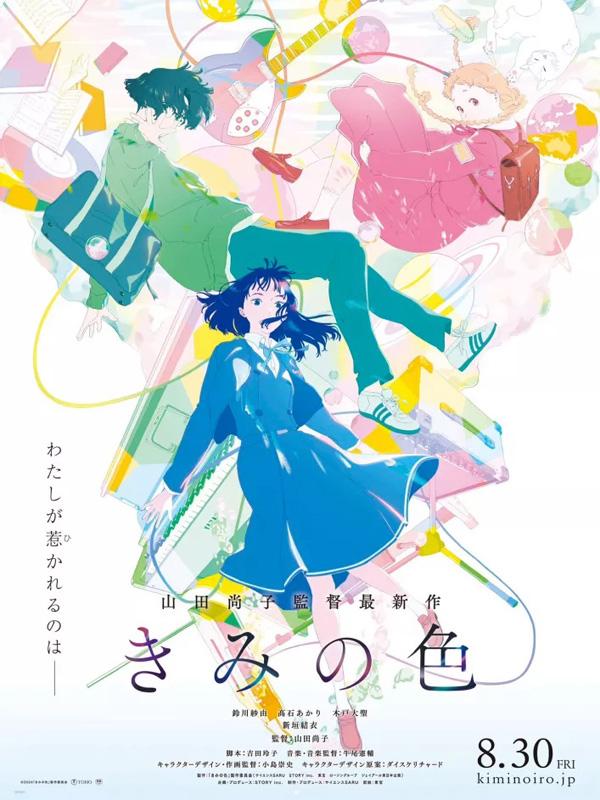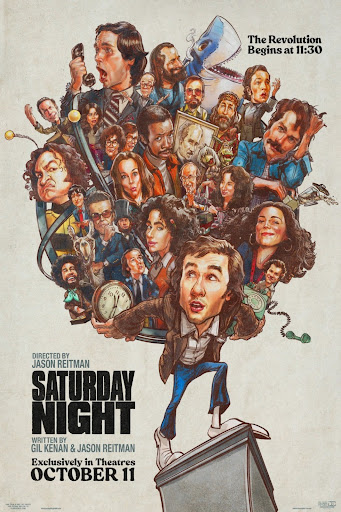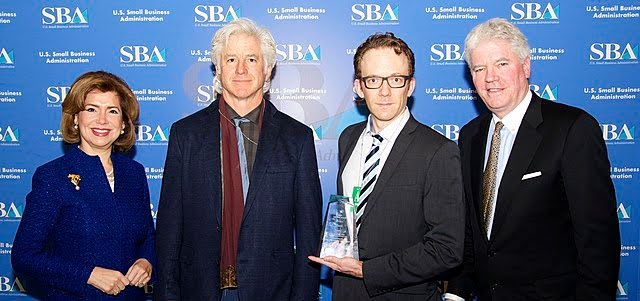My eyes enjoyed “The Colors Within.”
It cannot be overstated just how visually entrancing this film is, as the pastel color pallet blends perfectly with the realistic movement of the characters. Notably for an animated film, the characters shift in and out of focus as if there was an actual camera filming them. On the visual front, director Naoko Yamada has gone above and beyond
Having been released last August in Japan, “The Colors Within” has made its debut in the United States. The film is the latest anime film from Yamada, whom the AV Club has called “anime’s most well-known female director.” She is best known here in America for her film “A Silent Voice,” a down to earth and honest film about ableism and bullying, which won Best Animation at the 26th Japanese Movie Critics awards.
On a story front, “The Colors Within” is largely engaging but has a single overriding issue that hinders enjoyment.
The film centers around Totsuko, a Catholic school girl who sees the auras of those around her through vivid colors. This ability is the only bit of fantasy in the film and essentially allows Totsuko to single out creatives around her. When her classmate Kimi drops out of school for unknown reasons, Totsuko sets out to find out why. After a conversation with Totsuko and a boy named Rui about music, Totsuko convinces them to form an amateur band together as a way to get closer to Kimi.
What follows is an exercise in aggressive normalcy, as the film avoids any sort of sensationalism. Totsuko’s story presents an emotionally honest vision of late adolescence.
The pacing is slow, very slow, and as my sister made very clear to me on the drive home from the theatre, the pacing is not for everyone. Totsuko’s band eventually books a gig playing for the school’s St. Valentine Festival. Most films would put the focus squarely on the characters preparing for the concert and the conflicts that causes. But “The Colors Within” is not interested in that step of the creative process. As presented, creativity is a break from the tedium of everyday life. For a film about a band, it is actually a very quiet movie. This silence makes it so that when music does pop up it has a greater presence.
“The Colors Within” examines where creativity comes from. Totsuko is not your average musician. Music is not one of her main interests and in the beginning she barely knows how to play piano. The band starts as an excuse to talk to Kimi more. But as the film goes on she finds her voice through the mundaneness of normal life. Her songwriting is inspired by her classes at school, the friendship she forms with Kimi and most of all her faith defines her art, with her electro pop ballads serving as unconventional hymns. Totsuko is not some tortured artist with a burning desire to create as is typical of these types of films. She’s an ordinary hobbyist who is capable of creating beautiful songs when she applies herself.
There is a lot to be said about Totsuko. She is a fully realized character with an endearingly ditzy personality. The same cannot be said for Kimi, the film’s other lead character. The most pervasive issue throughout the film is that Kimi is a black hole of personality. Totsuko’s journey is started when she sees Kimi’s aura and is entranced by the beautiful colors gleaming off her, however the film has to spell this out to us because nothing Kimi says or does after justifies Totsuko’s obsession. It is especially weird because Kimi’s whole backstory is spelled out and none of it gives any insight into what drives Kimi’s decisions.
Kimi’s assertive blandness has a snowball effect, becoming more and more problematic as the film goes on and the emotional center of the film relies on us caring for her friendship with Totsuko. Kimi feels incomplete, like the filmmakers intended to come back and finish her later but forgot.
This is exacerbated by the character of Rui, a secondary character who serves as the band’s theremin player. By instrument choice alone he is infinitely more interesting then Kimi. His dynamic with Totsuko is also more interesting because of the odd pairing of a catholic school girl forming a band with a boy, despite having barely met any boys. Rui is about to graduate high school and go to medical school, having never had a chance to pursue his passion for music. The band finally gives him the opportunity to fulfill that dream, right before he is literally shipped off. Rui’s character explores the bridge between adolescence and adulthood, before mature responsibilities overtake personal passion, a far more complete character arc than the films deuteragonist receives.
But the most shocking part of “The Colors Within” is just how optimistic the film is. No one argues, gets into fights and even the band barely faces any struggle. The story is devoid of nastiness but it never comes across as saccharine. Comparing this to “A Silent Voice,” it seems to be a recurring theme for Yamada’s work that average people are just fundamentally good.
Optimism is in short supply these days.
Follow the Daily Wildcat on Instagram and Twitter/X









